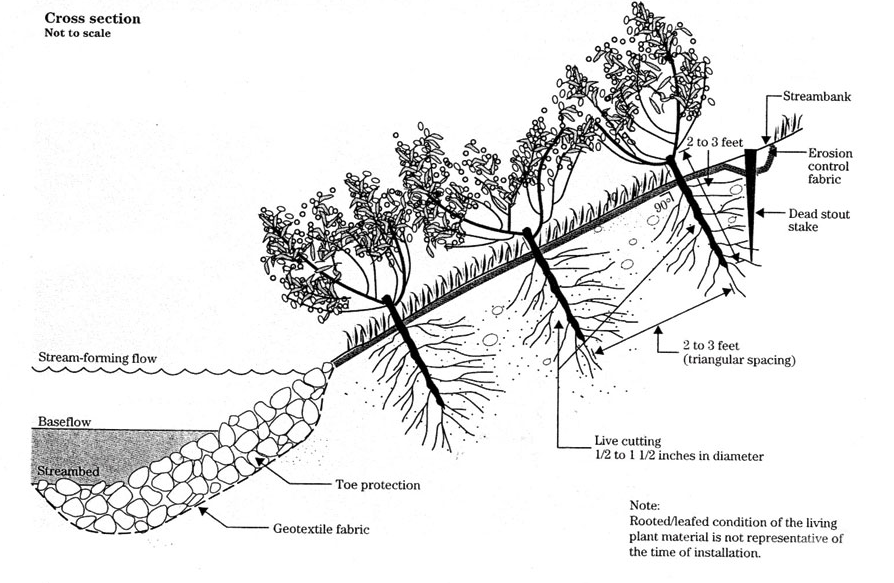Application: Bridges, canals, drainage, dykes, embankments, roads, footpaths, wastewater treatment plants
Description: Live staking is the placement of woody plant and tree cuttings (e.g. willow and cottonwood) on a graded streambank to grow, stabilize the streambank and control minor or shallow erosion by the formation of a root network and above-ground brush. It also is used as a means of securing other soil-bioengineered structures or erosion control measures such as fascines and brush mattresses to the ground. The added advantage of using a live stake to secure a treatment lies in the extra plant growth that the stake will provide.
Contribution to climate resilience: Live stakes reduce erosion by stabilizing the streambank through physical reinforcement and formation of a root network. By these means, they increase the resilience of streambanks to extreme climatic events. Because they are developed using local labour and locally available materials, they require less energy to produce, are far more sustainable, and can be applied quickly. If planned properly and planted at the right time, live staking can be valuable in preparing for likely changes in climate.
Supplementary sources of information:
http://www.ernstseed.com/products/bioengineering/live-stakes-and-whips/
https://www.nswa.ab.ca/sites/default/files/Lives%20staking%20%26%20joint%20planting.pdf
http://www.ontariostreams.on.ca/PDF/OSRM/Tech8.pdf
http://www.dec.ny.gov/docs/permits_ej_operations_pdf/stabiltechguid.pdf
https://www.landandwater.com/features/vol52no2/vol52no2_2.html
Background image credit: ICEM
This resilience-building measure is sourced from the Water Resource Adaptation Guide (2019) published by the National Council for Sustainable Development at the Ministry of Environment in Cambodia. The full Guide is available to download at URL https://ncsd.moe.gov.kh/sites/default/files/2019-10/Water%20Resources%20Adaptation%20Guide_March%202019_En.pdf


